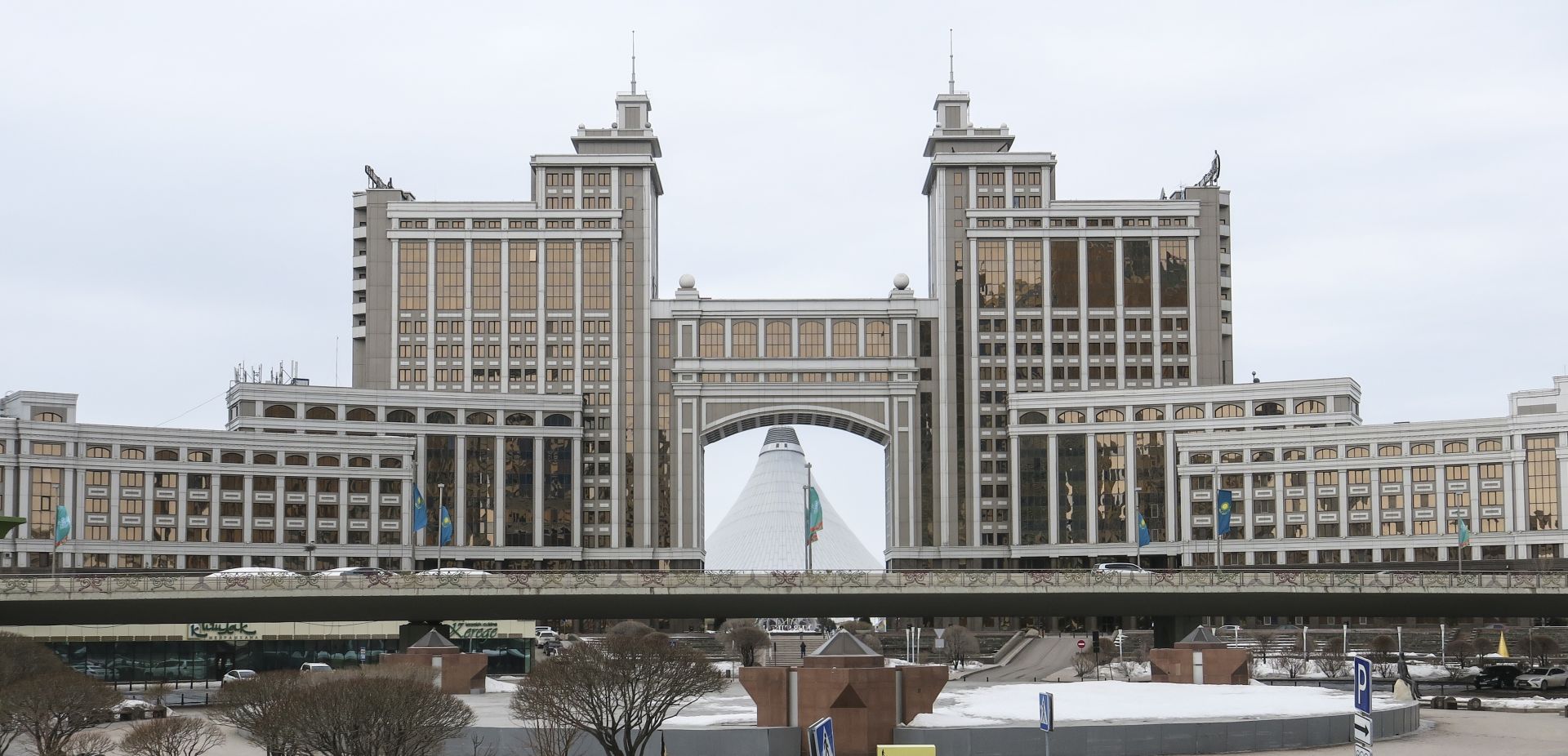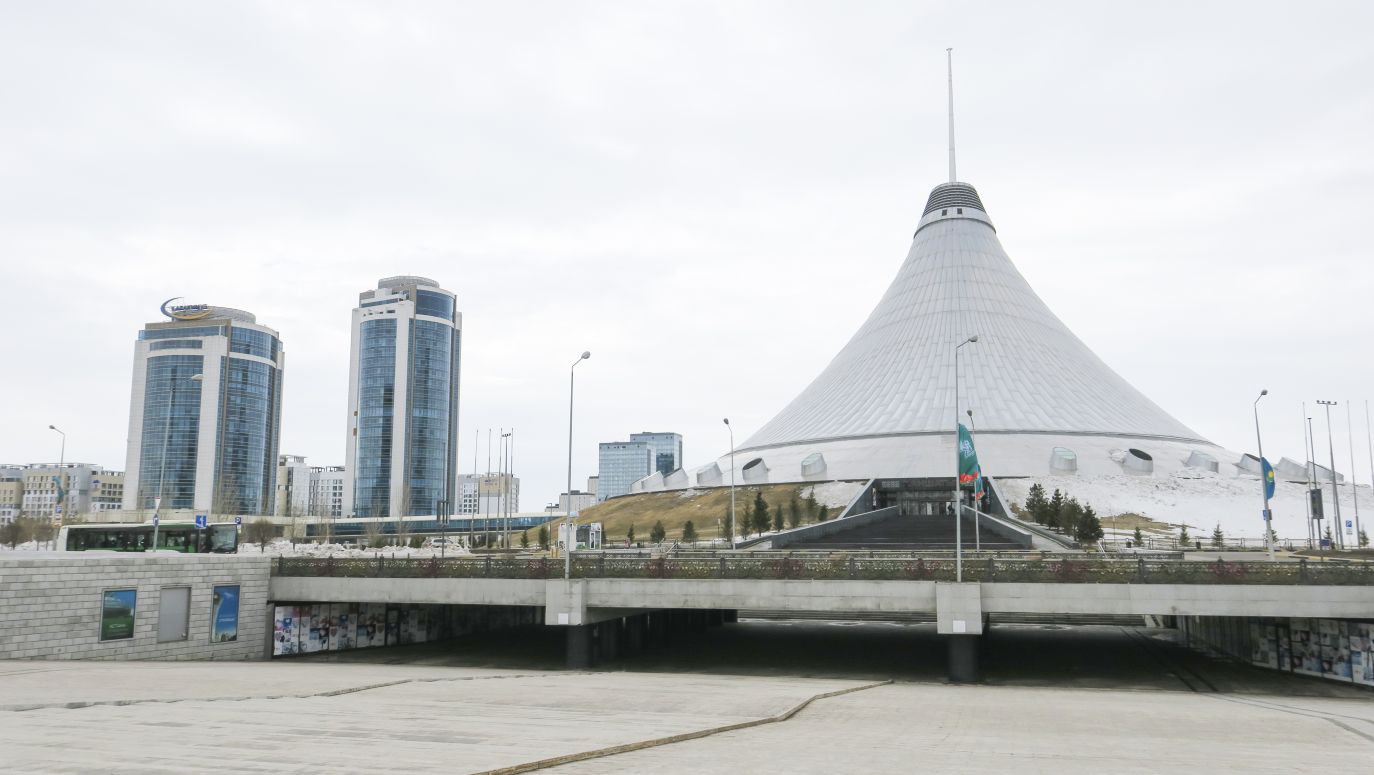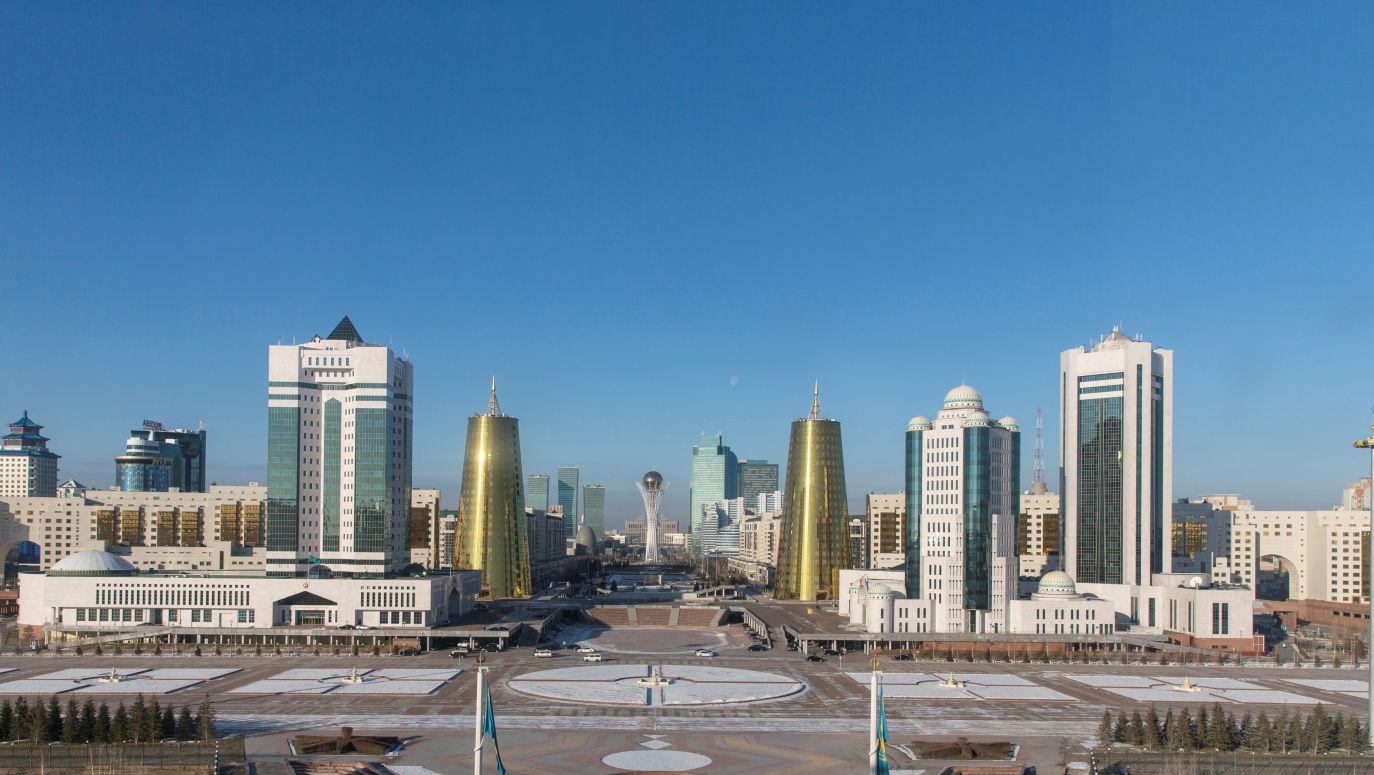The locals call them “beer cans” because they actually look like cans. There is also a luminous pyramid, the Palace of Peace and Understanding, which, among others, stands on the sidelines. It welcomes the guests of the meeting of religious leaders of the world - and it is here that the participants of the Congress of Leaders of World and Traditional Religions, including Pope Francis, will meet. There is also the Palace of Arts, rightly called “dog bowl” because it actually looks like a huge, blue bowl ...
The Muslim Nur-Sultan also has numerous mosques. Of course, huge ones. In 2012, the then largest mosque of Sultan Hezret in Central Asia was opened. But recently the “principal mosque of the republic”, built on the initiative of Nursultan Nazarbayev, was opened. It was he who laid the cornerstone for this temple in March 2019, the day before his resignation from the office of president. Officially, no state money was spent on the construction, but it is not known who paid for it. According to the Kazakhistani media, the mosque’s dome has a diameter of 62 meters, and the minarets are 130 meters high. Thirty thousand of the faithful can pray in the temple.
Kazakhstan is a country of many denominations and beliefs, so it is not surprising that we find here the beautiful building of the Cathedral of Our Lady of Perpetual Help, built of red brick. It is situated on the right bank of Nur-Sultan, at in a beautiful place. On the right bank, there is also the monumental Cathedral of the Dormition of the Mother of God, i.e. the main church of the Russian Orthodox Church. There are far fewer Catholics here than there are Orthodox Christians; in the past, Poles and Germans dominated among them, but most Germans went to West Germany, and some Poles – to Poland. Mostly Russians and Ukrainians by origin are Orthodox.
Nur-Sultan shows how great the possibilities of Kazakhstan are – but also its appearance shows the fact that it has many development paths ahead of it, but it is not yet known which one she will choose. The Russians are tempted by building their houses in their own style. The Chinese are tempted by proposing their buildings. Kazakhs are trying to choose their own path, drawing from their neighbors, and from the West, and even from the Far East.
– Piotr Kościński
–Translated by Dominik Szczęsny-Kostanecki
TVP WEEKLY. Editorial team and jornalists

 SIGN UP TO OUR PAGE
SIGN UP TO OUR PAGE








